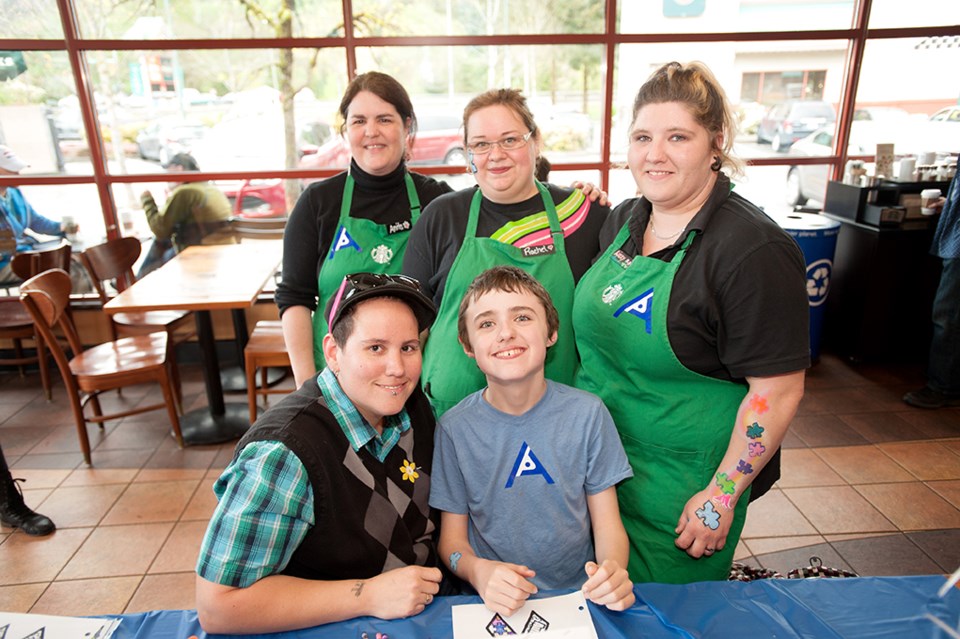Rachel McLeod’s mom was the first to point out something wasn’t quite right with one of the Squamish mom’s three-year-old twin sons, Logan.
“We started seeing things at six months, and then there was something else around a year, and then he just completely stopped talking and started falling behind in everything. And of course me being a new mom and the mother of twins, I was too busy,” she said. “It was my mom who brought it to my attention that all of these things put together, there is a reason for it.”
While McLeod took her son to the doctor right away, the diagnosis of autism spectrum disorder wasn’t something she was ready to hear.
“I went through checklist after checklist. I was like, ‘Please no, it can’t be autism,’” she said, “because I had, probably like everybody does, this one view of what an autistic kid looks like and how bad it can get… and it turned out to be autism spectrum disorder, and I have been just working with it since.”
One in 68 children have been identified as having autism spectrum disorder, according to the U.S. Centers for Disease Control and Prevention. Boys are almost five times more likely to be identified with ASD than girls.
According to McLeod, Squamish is a community that is open and accepting to autism, but it is difficult here because resources are scarce.
“It is so far from Metro Vancouver so a lot of the people, like our behavioural therapist, we have a waitlist because she is the only behavioural therapist in the actual Sea to Sky Corridor,” said McLeod. “So we have to wait.”
McLeod told her bosses at the downtown Squamish Starbucks about Logan’s autism diagnosis and said she wanted to have an April event to raise awareness for autism awareness month.
They agreed.
On Friday, the café was decorated with blue balloons, a symbol of autism month, and representatives from the Autism Society of B.C. were on hand to answer questions and hand out stickers. Families with children with autism came to colour and get their faces painted while parents and families mingled over coffee.
“This is a great way to get people out and talking,” said McLeod. “It happens to so many families, but nobody talks about it… it is time to bring it out into the open. It is OK. ”
Tanaya Forsyth sat across from McLeod at the decorated Starbucks picnic table with her son Bryce, 13, a bright-eyed, often smiling boy who sat colouring beside his mom. Both were decked out in blue.
While Forsyth acknowledges that it can be tough to be a parent of a child with autism – and difficult to be a child with autism – a recent positive event had a huge impact on her and her son.
“Sometimes we are a little late for school and that particular day we were late and we came to class and all the kids were wearing blue,” she said.
“We walked in and all the side of the class that sits near his desk… all started blowing bubbles out of little containers.”
Bryce is known to love bubbles.
There were also Timbits for the class. Forsyth asked the class if they knew the significance of wearing blue, they all did, she said. “It was heartwarming, I was taken aback by it.”
But things aren’t always so warm and fuzzy. Forsyth said there is still ignorance, and even fear, in the general public about autism.
“I find in social situations, going out in public… I have to explain to every single person, ‘He just has autism; you don’t need to be afraid. He is not acting out. I am not a bad mom and he is not a bad kid.’ That is usually the general stereotyping,” she said.
Bryce has a talent for art. Forsyth said Bryce had watched a YouTube video of the Pacific National Exhibition Playland ride the Helovator and then drew it, without having ever seen it in real life. Playland staff saw the drawing and were so impressed, they gave the family free passes.
As for the future for her son, Forsyth’s goals are pure and simple.
“I want him to be happy. That is my main goal,” she said. “I would love it if he could be more independent on his own. He will probably live with me for the rest of his life, and I am OK with that, but I would love it if he could have that independence. Being able to cross the street and I wouldn’t have to fear that something was going to go wrong. Being able to catch a bus by himself to go to school and be OK with that.”
As for McLeod, she is already seeing hopeful signs. Two weeks ago, after months in speech therapy, Logan called her mom for the first time.
“I nearly cried,” she said. “As small as it is, it means so much.”




